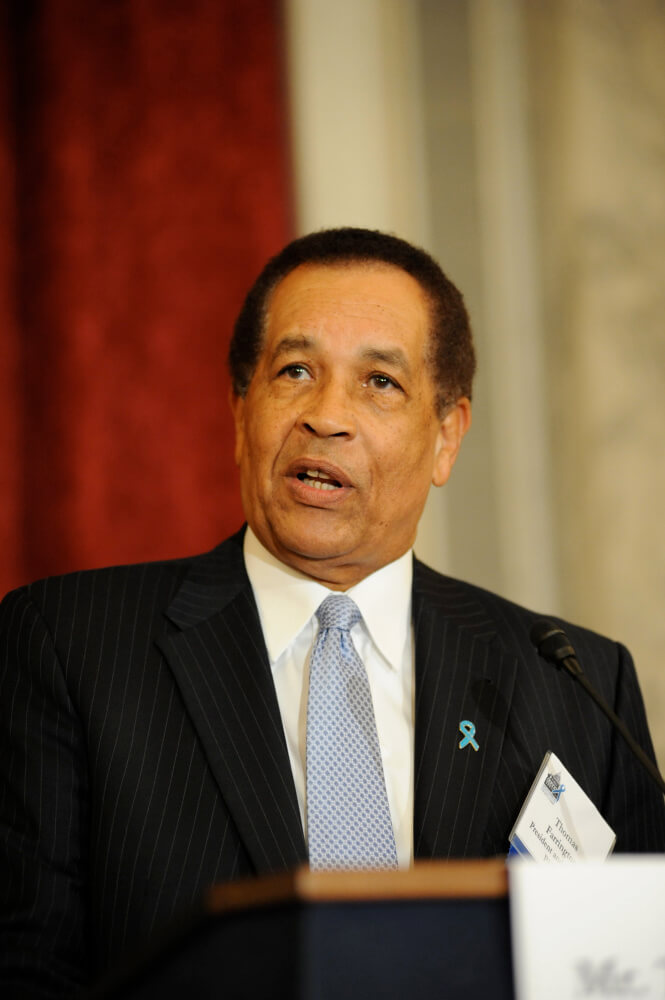Although disparities in the treatment of cancer and other diseases have been an endemic part of the American healthcare system, it took a pandemic to expose how pervasive they are. The high rates of COVID-19 in many communities of color drew attention to the broader health inequities affecting these groups.
In recognition of Minority Cancer Awareness Week, Dana-Farber hosted an online panel discussion on the problem of cancer disparities in several minority communities and how individuals and organizations can advocate for greater equality. Titled “The Color of Cancer: A Panel on Cancer Care Advocacy for Communities of Color,” the April event was sponsored by Dana-Farber’s Mosaic employee resource group — which aims to acknowledge, celebrate, and contribute to the cultural and racial diversity of the Dana-Farber community and to support an inclusive and welcoming environment — and the Institute’s Office of Inclusion, Diversity, and Equity. It featured leaders of groups working to lower barriers to health services around the country.
Panelists first discussed the social, economic, and political roots of today’s inequities and the burden they’ve imposed on communities of color.
“Health disparities, which are really injustices within the health care system, are not a natural occurrence,” said Darcie Green, CEO and executive director of Latinas Contra Cancer, a San Jose, Calif.-based organization serving low-income Latino residents of Silicon Valley. “They exist because of an absence of good public policy and allocations of funds that protect the most vulnerable, or because of policies that intentionally create those disparities.”
For those involved in improving access to cancer care for underprivileged groups, the disproportionate impact of COVID-19 on those groups came as no surprise, Green continued.
Panelists gave examples of challenges their communities face in cancer occurrence, screening, and treatment:
- Among Asian women in Massachusetts, breast cancer rates rose 89% between 1999 and 2013, even as they were declining for other groups, said Chien-Chi Huang, founder and executive director of Somerville, Massachusetts-based Asian Women for Health.
- Asian women also have the lowest rate of utilization of preventive care of any group in the state.
- African American men are diagnosed with prostate cancer at a 70% higher rate than men of other ethnic groups and die of the disease at more than twice the rate of other men, said Tom Farrington, founder and president of the Prostate Health Education Network.
- Similar disparities impact Native populations, among whom cancer mortality rates have increased over the past 20 years, said Chris Johnson, prevention and policy manager for the American Indian Cancer Foundation.

An added burden
The pandemic exacerbated many of these problems, creating financial losses, inflaming racial divisions, and raising anxieties that took a toll on health.
“We were already serving Latino clients who were losing their income, unable to feed themselves, unable to access adequate medical treatment as a result of a cancer diagnosis. Prior to the pandemic, those clients may have been able to rely on a community or a family to house and care for them as they navigated a health care system not adequately set up to meet their needs,” Green remarked. “But because of the pandemic, a whole household lost its income, a whole neighborhood lost their income.”
The pandemic also triggered a spike in assaults on Asians, who were blamed for the spread of COVID-19. Huang said she was even the target of a verbal attack while riding the subway in Boston.
Panelists spoke of how their organizations adapted to these challenges. The Prostate Health Education Network is producing a series of public service announcements to raise awareness of prostate cancer screening and treatment.
The pandemic has “created a new generation of users of Zoom and social media,” Farrington said. “We’re taking advantage of that by holding webinars and online forums in which participants can interface directly with experts.”
The American Indian Cancer Foundation has worked with tribal health systems and urban Indian care centers to increase cancer screenings and runs monthly online awareness campaigns on cancer disparities, prevention, detection, and survivorship.
Improving access to cancer screening and care will ultimately require a change in the way responsibility for disparities is perceived, Green said.
“If my client speaks only Spanish, her language isn’t the barrier; the barrier is a health care system not set up to meet the needs of a monolingual Spanish speaker,” Green noted.
Care plans need to be tailored to the conditions in which patients actually live, she continued. Advising a patient to go home, reduce stress, and take time off from work may not be helpful if the patient doesn’t have secure housing.
“Too often, the social determinants of health are thought of in isolation from the care patients are given,” Green asserted. “It comes down to listening to patients, believing what they tell you about what they need to prioritize their health, and figuring out a way to make that happen.”
“This event was a refreshing reminder of the types of conversations necessary to truly address cancer disparities in our communities,” said Doris Sempasa, program manager for the Center for Cancer Equity and Engagement at Dana-Farber/Harvard Cancer Center, who moderated the panel discussion. “Understanding the unique barriers to health and social wellness among various populations is the beginning of dismantling these inequities and improving health outcomes.”
